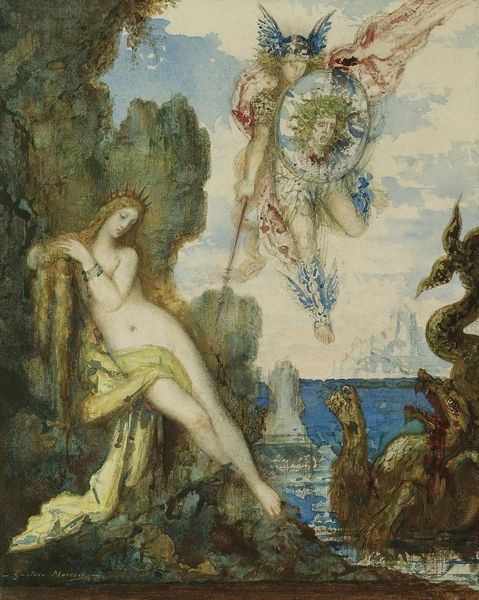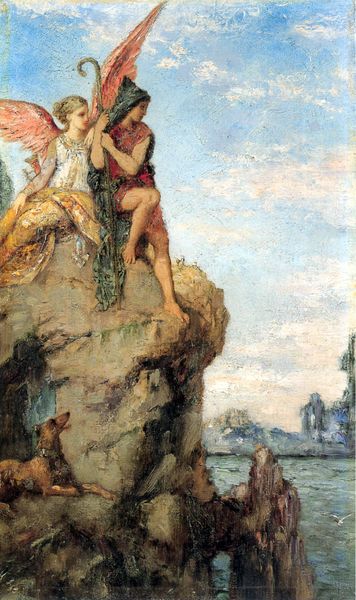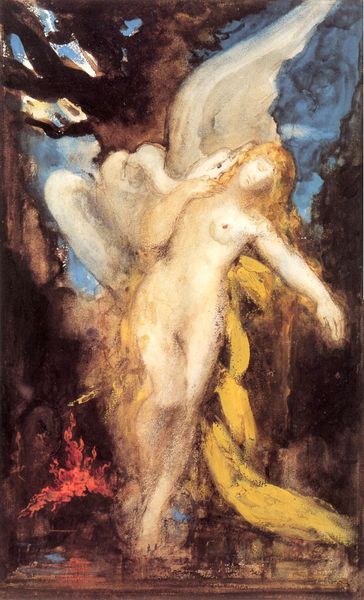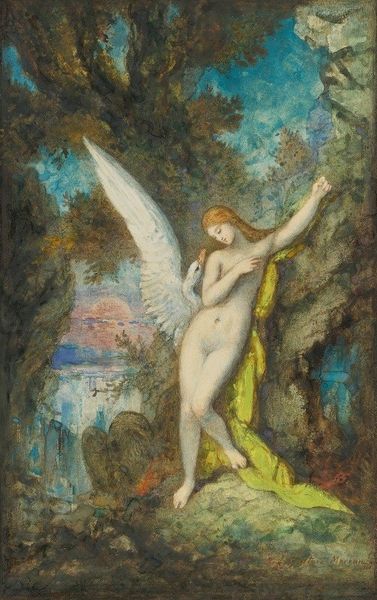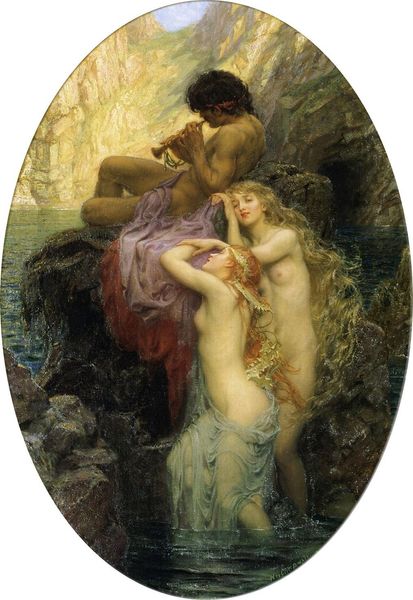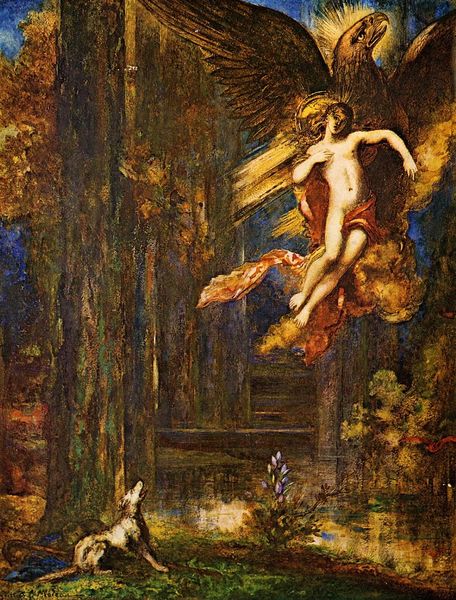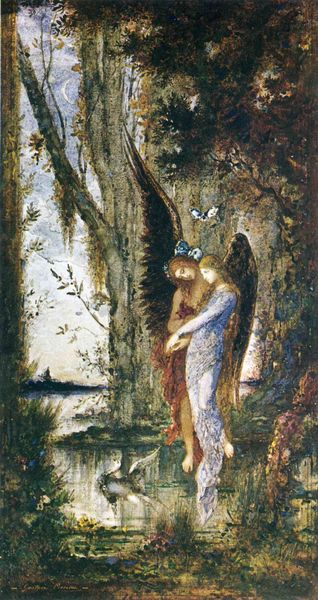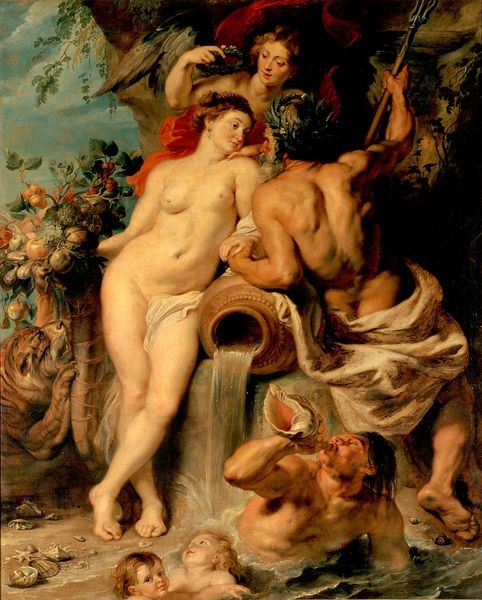
#
abstract expressionism
#
abstract painting
#
impressionist landscape
#
possibly oil pastel
#
oil painting
#
fluid art
#
roman-mythology
#
acrylic on canvas
#
underpainting
#
france
#
mythology
#
painting painterly
#
watercolor
Copyright: Public domain
Gustave Moreau painted The Victorious Sphinx in France in the late nineteenth century. This watercolor embodies the Symbolist movement's interest in mythology and the darker aspects of the human psyche. The image presents us with a triumphant Sphinx, perched above a rocky precipice littered with bodies. It immediately evokes the ancient Greek tale of Oedipus, who was the only person to solve the riddle of the Sphinx. Moreau's choice to depict the aftermath of the Sphinx's reign of terror is telling. In the social context of the time, the late 19th century was a period of rapid industrialization, scientific advancement, and social upheaval. Moreau seems to critique the smug certainty of progress and the ruthless exercise of power. To understand the artwork better, we might look into the literature of the period, and the rise of fin-de-siècle pessimism. These will help us understand how the image creates meaning through its cultural and historical associations. It reminds us that art's meaning is contingent on its social and institutional context.
Comments
No comments
Be the first to comment and join the conversation on the ultimate creative platform.
